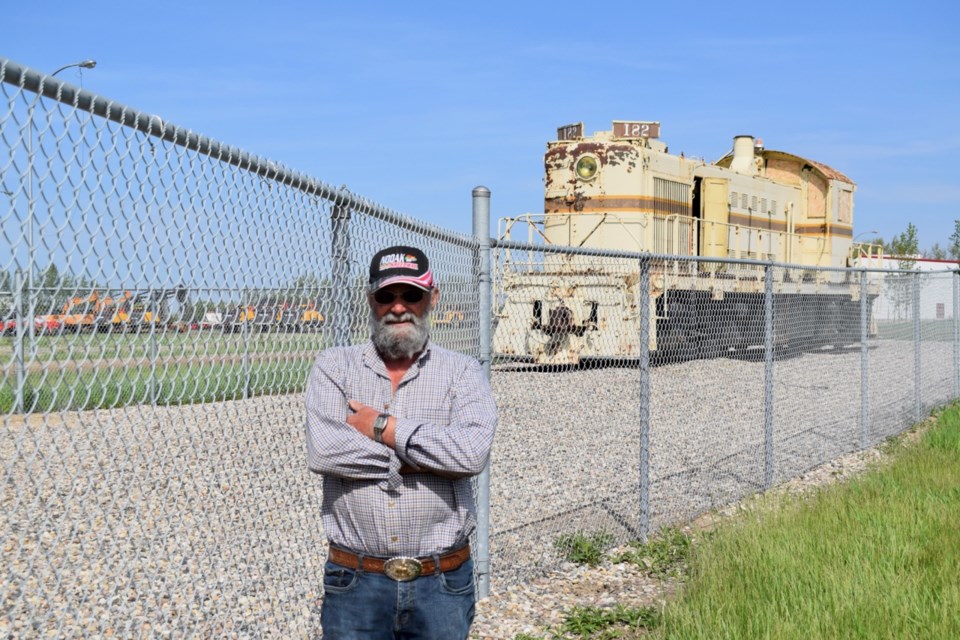Like many other retired mine employees, Richard Asbenlieder, who spent 36 years of his life working in the industry, talks about his job with love, passion and pride.
His work at the mines started in 1972 when he applied to work at the M & S Coal mine in Estevan. What started almost by happy fortune, turned out to be an entire era for Asbenlieder.
“I was looking for a job at that time. And this is funny, I went to the mine manager, and he asked me, ‘Are you a carpenter?’ I said, ‘Yeah.’ I was no carpenter. I could do a little bit, but I was sure no carpenter. He said, ‘OK, you can come to work.’ And I got that job,” recalled Asbenlieder.
Among other benefits of working in the mining industry was the camaraderie and opportunity to learn from people. And while he wasn’t a professional carpenter, Asbenlieder successfully worked for the mines for over 3 1/2 decades learning many things along the way and gaining professionalism as he was moving forward.
Throughout his times he’s tried quite a few different jobs. Some of them he bid on consciously, while other gigs he did in between fulfilling his main duties. Just like now, the seniority and the trade qualifications meant a lot and allowed people to move forward.
For some time Asbenlieder worked as a carpenter helper, and then he’d spent about a year building the 1800 dragline that was shipped from abroad. And after that, the big jobs began.
His first-ever bid was on truck operator position. The trucks he drove back then were rough and could carry about 40 tonnes as opposed to the contemporary huge beasts used at the Westmoreland Estevan mine. And the roads weren’t smooth either.
“The ones I drove in Bienfait had a bar (over the side window) that you could hold onto, so you didn’t fly out of the cab,” said Asbenlieder laughing.
He’s been driving coal trucks on and off for many years and witnessed the equipment development. The earlier trucks had no conveniences. The ones that came after had a prototype of air conditioning. There the air was cooled with the help of water. But outside of cooling the cab the water also would catch dust from the air, and every so often when a truck hit a bump on the road the driver was washed down with a dirty cascade.
“Those older trucks … they were rough. Cold in the wintertime, they didn’t have good gears, never had no radio.”
By the time he retired the trucks were nowhere close to what he started at. Asbenlieder recalls that as the time went by, the mines switched to 70-tonners, then to “really nice” 90-tonners and the contemporary trucks can carry about 150 tonnes. But he never had a chance to drive the biggest machines, as they came to use after his times.
The work was sometimes quite hard, and other times pretty boring as he would make 10-12 round trips a day, bringing coal from mines to the plant. But not by a fraction did it make him like his job less.
For a few years, Asbenlieder also worked as a driller blaster, blasting rock and coal. Then he moved over to operate the grader and then back to driving truck. But the best times and work experience he had within the mining system happened later in his career when he went to locomotive. While Asbenlieder got a job as a breaker, Bruce LaCoste, who was working aside him and running the train, taught him some new skills.
“He trained me how to run the train, and then every time we went out, he’d drive today, and he let me operate it every second time. Even in the wintertime, when it was freezing cold, we had lots of snow and had to sweep switches up, he’d be out there sweeping snow and I was inside, nice and warm. And it was my job sweeping it,” recalled Asbenlieder.
It was a smaller train delivering coal from the Bienfait mine site into the Town of Bienfait, but these years still stand out the most.
“The best part that I really liked was towards the end when I was running the locomotive … I really liked it when me and Bruce worked together,” said Asbenlieder.
He didn’t get to do that work every day, as there were many other jobs that had to be done and the employees were rearranged accordingly.
When LaCoste moved on and took on an electrician position, which was his trade, Asbenlieder bid on operating the train that he did for a few of years all the way up to retirement at the age of 65.
Many characters and life paths intersected at the mines throughout the years. Some Asbenlieder remembers as really cranky, while other coworkers were more open and willing to help, but he usually got along with everybody. At least a couple of dozen names came up during the interview as Asbenlieder was talking about his times at the mines.
Some people bid on different jobs a lot and switched often, and Asbenlieder changed just a few positions, but he said that once people started working at the mines, they usually stayed employed there for a long time. And even though 36 years at one place sounds like a long-term career, some people Asbenlieder worked with have been there for 45-plus years.
The sense of stability and security that work at the mines gave the employees, on top of the interest, options for growth and sense of doing something valuable, is something that many other industries are lacking.
Throughout all his years, Asbenlieder was never laid off. He said there was always some work to do, and the seniority system also motivated people to stay.
“It was a good job,” said Asbenlieder.



